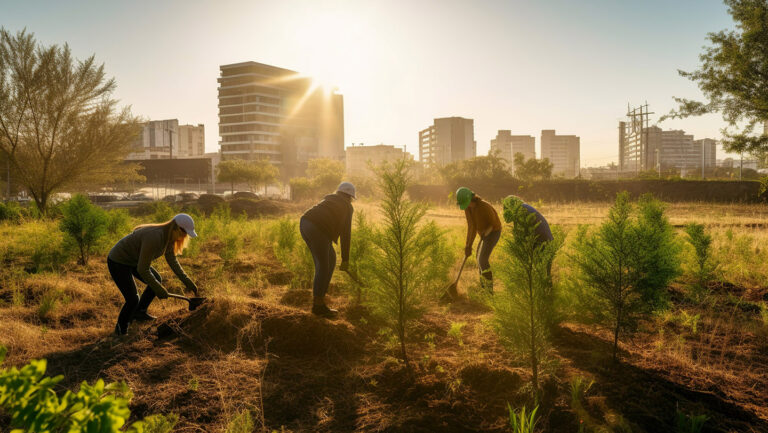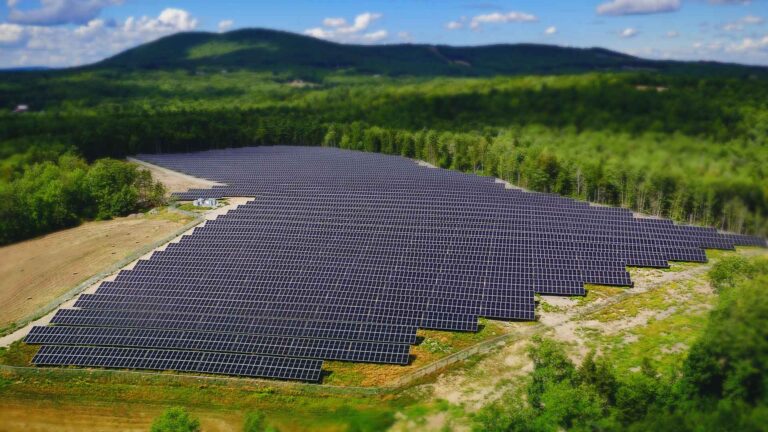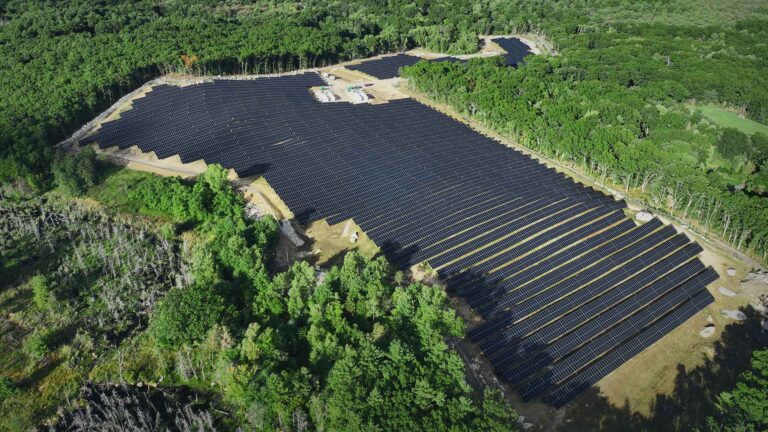With every solar energy project, we are making impactful change that can help save our planet.
There are many terms used in our industry: “solar,” “renewables,” “energy transition,” “beneficial electrification.” But no matter what you call it, each solar energy project is significant, and at Rewild, we’re doing our part to influence the planet-positive changes that are possible with solar.
Solar Energy Project Potential
In our world, solar means larger projects that go beyond your standard rooftop panels.
Normally 20-35 acres, our solar projects have the potential to power 1,000 homes on average. They are sites that have been cleared through interconnection (connecting private property to the grid), wetland delineation, zoning approvals, fire department accommodation, species mapping, landowner relations, screening requirements, and soil testing. A lot of pieces go into making each and every one of these solar projects work.
And each acre of solar cleared can have anywhere from 60 to 300 times the impact on carbon sequestration that an acre of trees would have.
But that’s just part of the story. Here at ReWild, we’re not just expanding solar energy, but we’re building true sustainability. We don’t want to just build our projects – we want to lead the industry. We’re not just putting panels in the ground – we view ourselves as partners in this ecosystem where we are all trying to do one thing: save our planet in every way we can.
Setting Expectations for Solar Projects Across Communities
As with every industry, solar has now seemed to have found its foothold. People understand it comes in different shapes and sizes with varying project segments of the industry:
- Residential (less than 25 kW)
- Small commercial (25 kW to 1 MW)
- Large commercial (1 to 5 MW)
- Utility scale (5 MW +)
Generally, there are regulations set up for the different-sized projects; many towns and cities have zoning ordinances that govern solar as a type of land use, and many environmental processes are in place now to consider effects on everything from wetlands to birds to turtles to soil.
But it is also a time of great change. As grids try to grapple with how to accommodate the growing number of solar projects and professionals try to explain battery storage components to planning boards, there is another layer at work in the ways states and neighbors are viewing solar, and that is through the lens of land use and how it fits into the long-term picture of making our planet green.
These projects will have a lifetime of 20 to 35 years, so it’s important that we all understand the ways in which solar – and the firms and individuals involved in solar – are impacting our sustainable balance for the future.

How Rewild is Influencing Solar Energy Project Efficacy and Future Impacts
That’s why here at Rewild we are on the forefront of solar firms that are truly taking a wholesome look at the work we’re doing and how it affects our planet. We believe strongly in our mission to fight carbon emissions and provide a more sustainable source of fuel to our planet, and we are starting to look beyond that basic mission to pursue goals like valuing our land for its contribution to biodiversity or permanently conserving land that is impacted globally by climate change.
While the parcels we convert to solar most significantly impact carbon emissions through simply producing clean solar energy, we are simultaneously looking around our region and our planet to find and conserve parcels that provide a high level of ecosystem biodiversity and contribute to climate resilience.
In 2021, Rewild contributed to the conservation of two such parcels in northern Maine, one parcel in the Caanan Valley and Dolly Sodds region of West Virginia, and a fourth parcel in Kenya. These parcels are great examples not only of conservation done right, but of an industry looking at its whole impact on the planet and making sure it’s doing its part, both through its direct business model and as a steward, a community member, and partner to keep our planet healthy.
Many industries do the same as they mature, and the solar industry has now reached that stage – Solar 2.0. Once established, business models evolve to not only meet their bottom line but to act as a community member that takes its role as steward seriously. These are lasting businesses; places employees want to stay, and that towns want to attract. Businesses that make all of us better by playing their part not only in meeting their mission and goals, but by meeting all of our missions and goals. Why wouldn’t we want a quiet solar project in our neighborhood if we knew that the fence was raised from the ground so groundhogs and rabbits could maintain their migration pathways? Or that there were blueberry bushes planted in the warm partial shade under the panels? Or that sheep would maintain the vegetation instead of mowers, and birds and ground nesting bees could make their dens in the earth left on site?
This is the type company Rewild seeks to be – not just a solar company, but a neighbor and community member. Our team has the experience and commitment to make this a reality, and we hope to work with you in your community soon.
This is the type of company Rewild seeks to be – not just a solar company, but a neighbor and community member. Our team has the experience and commitment to make this a reality, and we hope to work with you in your community soon.




